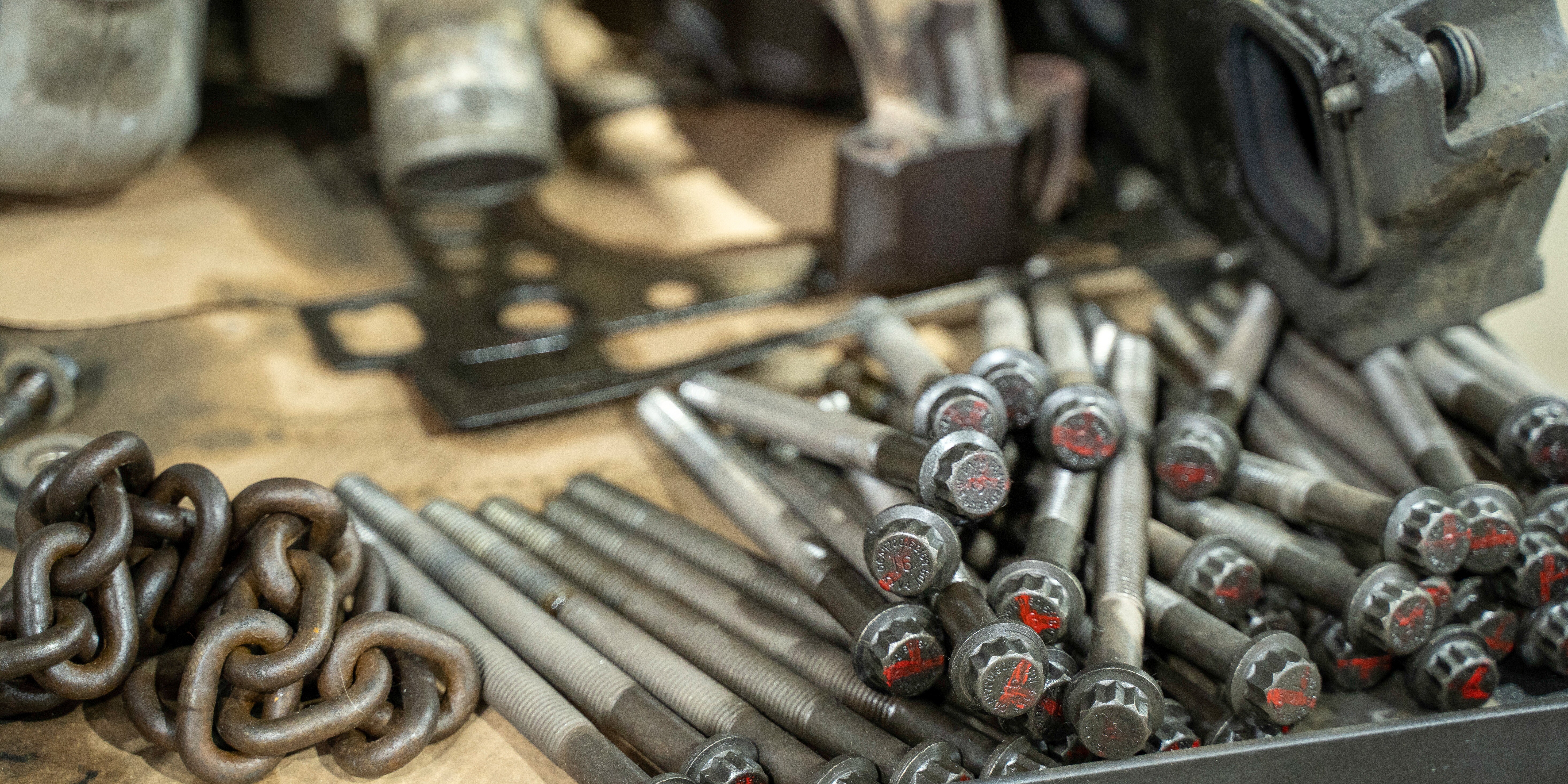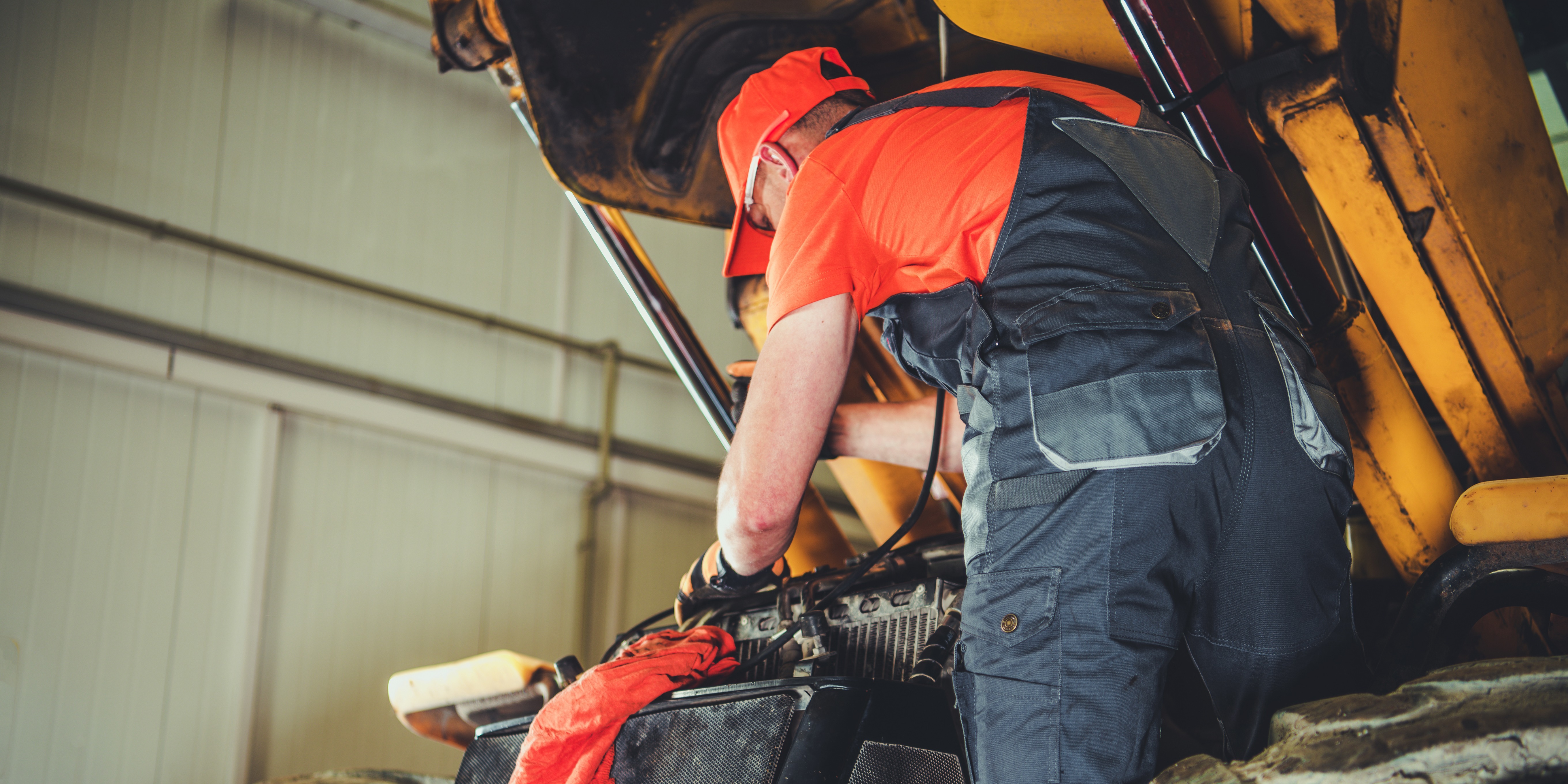
In the heavy-duty repair world, it’s easy to think of inventory as an asset. After all, having parts on hand keeps jobs moving and trucks on the road. But here’s the reality: excess inventory isn’t just sitting quietly in your parts room - it’s bleeding cash, taking up space, tying up working capital, and dragging down your profitability.
If you’re running an independent or mid-sized heavy-duty shop in North America, this article is for you. We’ll break down what excess inventory really costs, how to spot it, how to get rid of it, and how to reinvest that freed-up cash into growth.
What Excess Inventory Really Costs Your Shop
Inventory sitting idle on shelves doesn’t just represent a sunk cost - it actively costs you money every single day. Industry data shows the annual carrying cost of inventory runs between 20–30% of the inventory’s value. That means if you’re sitting on $100,000 in spare parts, you’re quietly burning through $20,000–$30,000 each year just to store and manage that stock.
Here’s where those hidden costs stack up:
- Capital Tie-Up: Money tied up in inventory can’t be used for growth. Instead of investing in new bays, hiring techs, or upgrading tools, it’s trapped in unsold parts.
- Storage & Handling Costs: Every square foot of shelf space costs rent, utilities, and labor to maintain. Handling time adds up - techs or staff shuffling parts, counting stock, or looking for items that may not even be there.
- Obsolescence & Shrinkage: Parts get lost, stolen, damaged, or become outdated. Once a part has sat for 12+ months, it’s got less than a 2% chance of ever being sold again.
- Administrative Overhead: Manual systems lead to miscounts, entry errors, and wasted hours reconciling spreadsheets or tracking down missing inventory.
Bottom line: Sitting on $100K in inventory could be costing you $25K a year in overhead - and that’s before you even consider lost opportunities.
Why Most Shops Carry Too Much (And Don’t Know It)
Many shop owners hold excess inventory “just in case.” It feels safer. But in reality, this mindset is outdated - and dangerous to your bottom line.
Let’s be real: if you haven’t used that part in the past 6 months, odds are you won’t use it in the next 6 either. After 12 months? It’s basically dead weight.
The real issue? Lack of visibility. Without proper tracking, you don’t know what’s actually moving and what’s gathering dust.
How to Identify and Cut Dead Inventory
Here’s how you can audit your inventory and find the dead weight:
1. Run an Aging Report
Use your inventory system (or at least a spreadsheet) to list parts by their last usage date. Focus on anything that hasn’t moved in 6+ months. After a year, consider it scrap unless proven otherwise.
2. Classify Parts (ABC Analysis)
Break down your inventory:
- A items: high-turnover, fast-moving (filters, fluids)
- B items: moderate movement (brakes, suspension parts)
- C items: slow or rare (turbochargers, ECUs, niche components)
You’ll likely find most of your money is tied up in the slowest movers.
3. Verify and Count
Cycle count suspect items. If they’re dusty, outdated, or overstocked - mark them for clearance or disposal.
How to Liquidate Excess Inventory Without Just Dumping It
Once you’ve identified the problem parts, move fast to recover value before they become worthless:
- Return to Vendors: Many suppliers offer returns (with restocking fees). Check your return eligibility - even a 20% loss is better than a 100% write-off.
- Clearance Discounts: Offer marked-down parts to customers or nearby shops. A 30% discount beats zero.
- List on Online Marketplaces: Platforms like OEC's D2D Link let you sell idle parts to other shops and fleets.
- Bulk Liquidation: Sell large batches to brokers. You’ll only get pennies on the dollar, but it clears space and recovers something.
- Donate or Scrap: For truly obsolete items, scrap them for metal value or donate to trade schools for a tax write-off.
And most importantly: clean your records afterward. Don’t let ghost parts linger in your system.
What You Could Be Doing With That Freed-Up Cash
Let’s say you recover $50,000 from liquidating and rightsizing inventory. What should you do with it?
Reinvest in ROI-Positive Areas:
- Add a Bay or Lift: Each bay could be worth $25–50K+ in net profit per year.
- Hire or Train a Tech: Great techs pay for themselves quickly.
- Upgrade Diagnostic Tools: Cut downtime and increase the jobs you can handle in-house.
- Expand Services: Add profitable capabilities like alignments or advanced emissions work.
- Invest in Marketing: Land that next fleet contract or mobile repair customer.
Think of it this way: money on the shelf does nothing. Money in a productive asset builds your business.
The Software Advantage: Automate It and Stay Lean
This is where tools like ShopView come in.
If you’re still using spreadsheets or pen-and-paper to track parts, you’re flying blind. You’re guessing on reorders, missing slow-movers, and wasting hours fixing avoidable errors.
Modern cloud-based shop software helps you:
- Track inventory in real time
- Set smart min/max reorder points
- Get automatic low-stock alerts
- See usage trends by part, bay, or technician
- Eliminate duplicate orders and admin waste
- Sync across multiple locations or mobile units
- Prevent shrinkage with audit trails and barcode scanning
One ShopView customer reported saving tens of thousands per year just by cutting bloated inventory and automating reorders. Others gained a 20%+ bump in technician productivity - because the right parts were on hand when needed.
Pro-Level Inventory Tips by Part Type
Here’s how to set smart stocking strategies by part category:
Fast-Moving Consumables (Filters, Fluids)
- Aim for 6–12 turns/year
- Keep 1–2 months max on hand
- Lean on your supplier’s stock, not your shelf
Common Repairs (Brakes, Starters, Air Bags)
- 3–6 turns/year is healthy
- Track seasonality (e.g. brake parts spike in winter)
- Keep enough to avoid delays, but not excess
Big-Ticket/Slow Items (ECUs, Engines, Turbochargers)
- Avoid stocking unless pre-sold
- Consider consignment inventory for rare items
- Let data, not emotion, drive decisions
Conclusion: Don’t Let Your Shelves Drain Your Profit
Excess inventory might feel like a safety net - but it’s actually one of the most expensive inefficiencies in your shop. It kills cash flow, crowds your workspace, and limits your ability to grow.
The good news? You can fix it.
Audit your stock, clean out the dead weight, and reinvest that money into your bays, tools, people, and processes. Then use modern software like ShopView to keep things lean, accurate, and profitable going forward.
Next Step: Want to see what smarter inventory management looks like?
Book a demo of ShopView and see how we help heavy-duty shops cut waste, track parts in real time, and free up cash for what actually matters - growing your business.
.png?width=1500&height=1500&name=11%20(1).png)








.png?width=1500&height=1500&name=1%20(1).png)

%20-%20Copy.png?width=1500&height=1500&name=2%20(1)%20-%20Copy.png)



